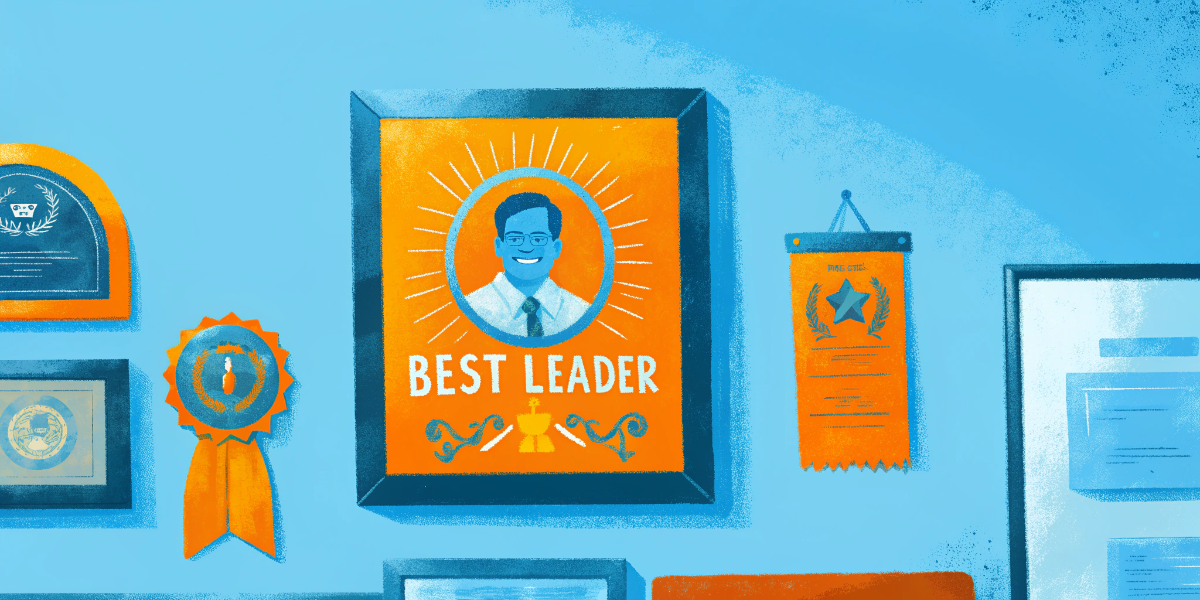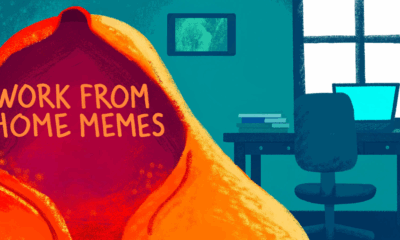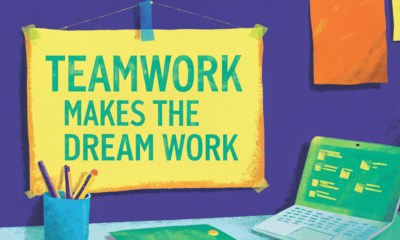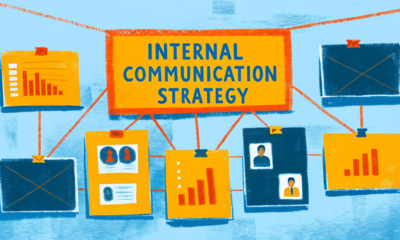HR Leadership
Choosing the Right HR Tech Stack for 2025

You’re under the hood, the engine is running, your team’s waiting — and the only wrench you’ve got doesn’t fit.
That’s what choosing HR tools typically feels like in 2025. It’s not the lack of options. It’s a pile of tools that weren’t made to work together, all of which promise to solve it all but fix only one thing — and sometimes, not even that.
While the HR department is left with a mess of requests, such as hybrid schedules, global teams, constant policy changes, and demands for enhanced employee experiences, all arriving on their desk at once. Without a solid tech foundation, even the most experienced teams are stuck duct-taping workflows and chasing bits of data across a dozen platforms.
In fact, a quality HR professional does not need software. No more than a good mechanic needs to fix an engine with a common toolbox. But with the right ones? Not only do they fix — they tweak. Robotize. Streamline. And finally get their fingers out of the paperwork and back into the job that really matters: people.
With the right HR tech stack, routine work hums in the background. Dashboards replace spreadsheets. Feedback loops stay open. And the once-crowded wall of printed surveys and sticky notes — like something from an 80s detective movie — yields to a clean, integrated view of the entire employee experience.
It’s not a matter of grabbing whatever’s trendy, though.
It’s about taking deliberate decisions in alignment with your team, your strategy, and your scale. Because a platform that scales ideal for a tech startup in San Francisco may not work for a manufacturing firm in Ohio — or a consulting firm in Berlin.
This post is here to guide you through separating signal from noise.
You’ll get a clear-cut snapshot of the key HR software solutions to consider in 2025 — from core HRIS systems to AI-powered help bots, people analytics, and DEI dashboards. We’ll give you global usage trends, actionable checklists, and insight to help you create a stack that doesn’t only do well on paper, but in the real (and often messy) world of HR.
What makes an HR tech stack future-proof in 2025
Every HR tech conference, webinar, and roundtable in the last year seems to be about the same question: what do we automate next — and how do we not let our systems turn into a tangled mess?
The tools are everywhere. That’s not the problem anymore. The real problem is building a stack that actually works — one that reflects how your people work, not what vendors tell you.
HR leaders today are shifting from “what can this platform do?” to “what does my team need to stop doing manually?” The answers are coming:
- Onboarding? Automate it.
- Leave requests, policy updates, FAQ management? Automate it.
- Feedback cycles on a schedule, gathering engagement metrics? Automate that too.
And then there’s the bigger question: do you go all-in on a single platform, or do you pick and choose best-of-breed tools for each phase of the employee experience?
One size does not fit all. All-in-one systems are easy and have fewer integrations to manage. But best-of-breed tools can give you more control, better UX, and more feature-rich functionality — if you’ve got the bandwidth to connect the dots.
A 2025 future-proof HR tech stack is by design agile. It’s modular, integration-friendly, and geographically as well as functionally versatile. All while it must protect employee data, deliver decision-informing insights, and facilitate inclusive distributed workforces without friction.
What the smartest HR teams are doing
Here’s what’s consistently emerging at HR tech conferences and in consultant networks:
- Building modular stacks that scale with team needs
- Prioritizing real-time people analytics tools over static dashboards
- Choosing privacy-first tools that can meet global compliance out of the box
- Choosing simple UX over broad customization
- Piloting smaller tools for niche needs before investing in larger suites
Fit check — Ask yourself:
- Does this tool solve an actual workflow issue today?
- Will it scale with us across departments, regions, and time zones?
- Will it fit in neatly with what we have already — or will it force a costly migration?
- Is the user experience one that employees will actively engage with, rather than just tolerate?
- Can we trust it with sensitive data and compliance?
Your tech stack should work like your best team member: invisible when things run smoothly, but always there to catch what matters.
Core components of a modern HR tech stack
Let’s break down the core categories shaping the HR tech landscape in 2025 — with short, useful tool insights and global adoption cues.
Core HR & People Operations
Your home base for all things people.
These systems handle the core layers of your employee lifecycle: data, payroll, time off, benefits, and compliance. By 2025, the top HR operations tools aren’t just doing admin — they make it possible to have clarity, decrease friction, and quietly keep the team’s back in the background.
BambooHR
Best for: Mid-sized, high-growth businesses with slim HR staff
BambooHR has established itself as a reliable HRIS for companies who want simplicity without compromising on clarity. It accumulates the employee data, simplifies PTO tracking, and gives streamlined onboarding processes. Its clean UX and mobile-friendliness allow employees and managers to effortlessly engage with the system.
Keep in mind:
Whereas all fundamental HR needs are addressed by BambooHR, it may get claustrophobic for larger organizations. Sophisticated workforce planning, local compliance outside of the U.S., or complex custom workflows may have to be augmented with add-ons or other solutions.
Personio
Best for: European HR teams with intricate cross-border compliance
Personio consolidates HR admin, recruitment, time tracking, and payroll in one platform — with EU-compliant and multi-language support included. It has a modular design that ensures robust scalability, particularly where GDPR and local labor laws are relevant.
Keep in mind:
Personio’s UX is improving significantly but remains somewhat clunky compared to U.S.-based design-led products. Moreover, although it has international growth covered, its most admirable features are founded on European regulatory environments.
Gusto
Best for: U.S.-based small businesses and startups needing rapid setup and full-service payroll
Gusto is greatly valued for being simple to pay payroll, file taxes, and sign up for benefits. It supports contractors, W-2 employees, and benefits administration — all through an easy-to-use interface that doesn’t require an HRIS guru to operate.
Keep in mind:
Gusto targets primarily U.S. businesses. International functionalities are limited, and scaling past 100 employees may reveal the absence of reporting breadth, intricate analysis, or integration scope.
Global Insight
BambooHR and Personio remain go-to solutions for mid-sized teams in Europe and North America. While Personio can be selected for compliance depth, BambooHR emerges on usability and setup speed. Gusto fills an obvious need for small teams just building out their HR function — but may need to be swapped or complemented as complexity grows.
Talent acquisition & candidate experience
Hiring top talent starts with how people first interact with your company.
From candidate sourcing and screening to interviewing and offer management, hiring systems in 2025 will be expected to do much more than just post jobs. They’ll need to offer a seamless, human-centered experience for candidates and hiring teams — while being fast, compliant, and audit-proof.
Greenhouse
Best for: Mid-to-large businesses with formalized hiring
Greenhouse is an award-winning applicant tracking system (ATS) that’s used for hiring at scale across numerous teams. It features strong customization, nicely thought-out pipelines, and interview kits that reduce bias and bring uniformity to hiring decisions. Its integrations platform ranks among the industry’s best and integrates seamlessly with HRIS, job boards, and scheduling tools.
Keep in mind:
Greenhouse’s versatility does come with a learning curve. It overwhelms smaller teams or orgs without a recruiter to perform this work. Pricing is also tiered and expensive as hiring demands grow.
Workable
Best for: Small-to-mid-sized teams that desire quick setup and global reach
Workable simplifies recruiting with built-in templates, sourcing tools, and AI suggestions that speed up finding candidates. It’s plug-and-play ready right out of the box — with little setup time — and provides native support for video interviews, tests, and offer letters.
Keep in mind:
While ideal for kickstarting, Workable may feel claustrophobic if you have profoundly customized workflows or highly complex permission levels in mind. Reporting functionality is adequate but not as comprehensive as in enterprise solutions.
Lever
Best for: Collaborative, candidate-centric hiring businesses
Lever unifies ATS and CRM features in one platform — ideal for teams building long-term candidate pipelines and relationship-driven hiring. Features like auto-nurture campaigns and candidate rediscovery save time-to-hire and improve hiring parity.
Keep in mind:
Lever’s CRM-like approach may be too much in low-volume or transactional hiring companies. A few users find the interface annoying to get used to initially, especially for non-recruiters.
Global insight
Greenhouse is still the favored ATS in professional services and tech because of its organized methodology and robust integrations. Workable has been a favorite among global startups because of its ease of use and integrated sourcing features. Lever is gaining traction among teams willing to invest in candidate experience and talent pipelines over the transient demand for hiring volume.
Performance, feedback & engagement tools
It’s not only how you bring in talent, but how you develop and retain it as well.
In 2025, engagement and performance tools are more than a pulse survey and an annual review. The best do more than that. They help HR teams create a culture of continuous feedback, recognize employee achievements in the moment, and connect performance data to learning and retention programs.
Lattice
Best for: Businesses investing in continuous performance and goal alignment
Lattice has a modular OKR, performance review, engagement survey, and career development suite. The product is renowned for its elegant UX and powerful manager tools — like agendas for one-on-one meetings, feedback prompts, and development plans. Its reporting can link performance to sentiment trends, giving HR teams an improved sense of culture and retention risk.
Keep in mind:
Lattice excels when utilized daily, but it needs to have buy-in from managers. Without this, certain features can be left underutilized. Additionally, although the tool is flexible with scalability, costs can increase rapidly as you add more modules.
Culture Amp
Best for: Mid-to-large teams interested in engagement insights and DEI tracking
Culture Amp combines surveys, performance management, and people analytics with a science-based approach to engagement and inclusion measurement. Its dashboards and DEI benchmarking data are especially helpful to companies tracking over-time progress.
Keep in mind:
Culture Amp leans heavily towards engagement — so while it does have performance tools, they’re not as powerful and flexible as systems for those functions. Teams with complex review cycles or competency matrices may need more than it can offer in terms of customization.
15Five
Best for: Small to medium-sized teams who desire to build a culture of feedback
15Five is human-centered performance management with weekly check-ins, kudos, goals, and manager enablement features. It’s designed to create habit and visibility — so it’s simple for teams to remain aligned, especially in hybrid teams.
Keep in mind:
15Five’s minimalist design is a gift for most, yet some scaling teams grow beyond its simplicity. It’s not for companies that need rich workflows, org-level calibration, or deep integration with enterprise HRIS systems.
Global Insight
Lattice is utilized widely across tech, SaaS, and remote-first companies looking for one performance + engagement platform. Culture Amp is favored by those doubling down on experience-driven growth and DEI. 15Five is a favorite among early-stage companies focused on connection and people development — but many supplement with more structured tools in subsequent stages as they scale.
People analytics & strategic insights
Get a glimpse of what really happens behind the scenes in your organization.
Information is now HR’s biggest asset — as long as it can be used. For 2025, the most valuable HR analytics tools don’t simply regurgitate numbers; instead, they bring out patterns, point out threats, and condense intricate data into actionable information for leaders to make decisions on. From flight risk alerts to DEI dashboards and workforce planning, they allow HR to transition from reactive to strategic.
Visier
Best for: Businesses and people analytics teams seeking in-depth workforce insights
Visier is one of the most advanced people analytics solutions available. It weaves together information from multiple HR systems (payroll, engagement, ATS, etc.) to provide an complete view of your workforce. It’s very good at predictive modeling, e.g., identifying turnover risk or performance trends by business unit.
Keep in mind:
Visier is build-for-scale. For smaller organizations or those that don’t have an in-house analyst, its features might be not utilized to their full capacity. Setup is complex and the full power lies with hands-on deployment.
ChartHop
Best for: Mid-sized companies needing visual, easy-to-digest org data
ChartHop gets people data in simple and pretty reach. It delivers visual org charts, headcount planning, and compensation tracking in one living, central hub. Its integrations enable layering performance, DEI, and compensation data to make informed decisions between departments.
Keep in mind:
ChartHop is very intuitive but less suited for advanced modeling and predictive analytics. It’s optimal for teams valuing simplicity and cross-functional collaboration over heavy data science.
PeopleGoal
Best for: HR teams that need custom people dashboards and light automation
PeopleGoal is a flexible platform with custom analytics workflows and dashboards particular to what your organization needs. It’s suitable for HR teams experimenting with OKRs, engagement metrics, and self-serve reporting.
Keep in mind:
Its flexibility is a double-edge sword — while it offers freedom, it may also require more setup and selection than plug-and-play software. Small groups may prefer simpler analytics tools with simple templates.
Global Insight
Visier is the innovator in high-volume data environments where HR planning must connect with finance, operations, and retention modeling. ChartHop is gaining popularity among growth businesses and technology companies for the planning and transparency capabilities. PeopleGoal is the preference of HR teams who desire high levels of customization without enterprise complexity.
DEI & culture tools
Tools that build inclusion, trust, and sense of belonging.
Not only is an inclusive workplace a value — it’s a 2025 business and compliance necessity. DEI and culture-focused tools help HR track equity gaps, build inclusive learning, and amplify underrepresented voices. When implemented well, they build trust with teams and transparency in leadership decisions.
Pluto
Best for: Real-time measurement of DEI and cultural benchmarking
Pluto offers HR and DEI departments real-time dashboards that identify gaps in representation, sentiment differences between groups, and cultural trends over time. It contrasts your organization’s DEI data against industry peers — giving insight into what is propelling progress and what needs attention.
Keep in mind:
Pluto’s suggestions are only so great as the data you feed into it. If your people data is bad or inconsistently tagged, the platform’s suggestions may not be so smart. Best outcomes arise from cross-functional alignment with IT and people analytics.
Crescendo
Best for: Continuous, individualized DEI learning
Crescendo delivers bite-sized, job-aligned DEI learning journeys directly to Slack, Teams, or email. It learns about each employee’s location, occupation, and lived experience — making DEI learning less one-size-fits-all and more contextual. Especially good for companies that are seeking to inject inclusion into daily culture, rather than training cycles annually.
Keep in mind:
Crescendo is focused on microlearning — it is not designed to replace in-depth workshops or live facilitation. It works best when paired with other efforts and supported by leadership messaging.
Peakon (by Workday)
Best for: Enterprise-level sentiment and inclusion surveys
Peakon, which is now owned by Workday, helps big organizations track trends about inclusion and engagement over time, teams, and identity groups. Its natural language understanding reads patterns in open-ended responses and helps prioritize action areas from real feedback.
Keep in mind:
Peakon is ideal for bigger organizations who are already using Workday. For smaller teams or those who are not in Workday, implementation and integration will be more trouble than worth.
Global Insight
As wider DEI reporting obligations roll out across the globe, platforms like Pluto are becoming the default solution for proactive HR departments. Learning about inclusion is shifting away from static training and towards constant practice — where Crescendo has an edge. Enterprise HR departments, on the other hand, continue to rely on industrial-strength sentiment tools like Peakon to track inclusion at scale.
AI, automation & employee support tools
Daily tasks don’t need daily effort anymore.
In 2025, the best HR teams aren’t working more — they’re working differently. AI-powered HR tools are automating admin, answering employee questions, assisting in writing job descriptions, and even alerting for burnout risks before they become major problems. These tools are often the silent power behind more efficient workflows and more satisfied teams.
Leena AI
Best for: Automating HR helpdesk and internal employee support
Leena AI functions as an HR copilot — it responds to employee FAQs, guides them through leave policies, expense claims, and more. It integrates with your HRIS and knowledge base to offer 24/7 support via chat, saving time for HR teams and speeding up resolution for employees.
Keep in mind:
Leena AI works best where there are highly documented policies at an organization and good internal systems. Without such a foundation, the bot may not have quality input to work optimally. Personalization may also require manual intervention.
Paradox (Olivia)
Best for: High-volume recruiting task automation
Paradox’s Olivia chatbot assistant does everything a recruiter would — screening, interview scheduling, and responding to candidate queries — a blessing especially for volume recruiting companies. It’s a good fit for hourly and frontline roles, where speed and volume matter most.
Keep in mind:
While extremely efficient, Olivia is a high-volume recruitment star. For complex roles or very specialized recruiting processes, it will probably have to be augmented with more traditional outreach.
Humu
Best for: Changing behavior via nudges and micro-interventions
Humu uses behavioral science and AI to send timely, personalized nudges that help employees and managers build healthier habits — whether that means giving more feedback, thanking a peer, or setting clearer goals. It’s subtle, consistent, and designed for culture change from the ground up.
Keep in mind:
Humu works best when complemented by leadership and HR communications. On its own, it won’t fix culture issues — but it can assist in solidifying the habits that cause culture to stick.
Global Insight
Leena AI is expanding rapidly among enterprises that need round-the-clock HR support without scaling headcount. Paradox is a favorite in hospitality, retail, and logistics where speed and automation matter most. Humu is increasingly used by HR leaders invested in long-term engagement and behavioral culture shifts — especially in hybrid and remote teams.
Build a stack that works the way people do
We’ve talked about tools that help you hire more intelligently, communicate more effectively, track performance more accurately, empower individuals more personally, and build cultures that truly embody your values. And along the way, it becomes apparent: HR tech today is more than just software. It’s the subtle infrastructure that supports how teams work today — and how humans work.
But no tool will choose itself. And no stack builds itself.
The most influential HR leaders of 2025 are not just stacking platforms by sheer necessity. They’re planting on purpose. They’re asking: Does this tool reduce friction? Will it scale to honesty? Does it reflect the way we want to work, grow, and lead? They’re not chasing all the trends — they’re creating rhythm, transparency, and purpose into systems.
Yes, a million choices. And yes, the din is real. But in it all, the question of substance is not dashboards or features. It’s this:
Does this tool make work better — for the people who do it?
Because what most matters isn’t whether your HR stack is most future-forward or feature-rich. It’s whether it allows your team to move more boldly. Connect more transparently. Lead more compassionately.
You don’t require more tech. You need the type of care that lets you focus on the work that truly matters. The type that knows when to step aside — and arrive when it counts.
So invest in time to design your stack intentionally. Design it to last. And most importantly, design it to care for the people behind every screen, every role, and every decision that shapes your culture.
Because when you build with purpose — you don’t just follow. You create the pace for what’s ahead.

HR Leadership
HR Personal Brand Playbook to Build Influence and Drive Change

Personal branding has become one of those things we all know we need, yet rarely pause to understand. Not the glossy, performative version – but the real one. The kind that takes shape in the choices you make, the values you share, and the way people feel after working with you. And for HR leaders, that kind of visibility matters more than ever.
We live in a world where credibility begins long before conversation. Forty-seven percent of employers are less likely to interview a candidate they can’t find online, and while that stat speaks about job seekers, it quietly points to a deeper truth: people trust what they can see. If you’re leading culture, shaping teams, and influencing decisions, your absence online doesn’t make you neutral – it makes you unclear.
A strong HR personal brand is not just your reputation; it’s the human expression of the company values you represent. Whether you intend it or not, you become a reference point for how people communicate, grow, and lead inside the organization. Your voice sets the tone – and the bar.
And that’s exactly why personal branding for HR requires intention. Not perfection, not performance, but deliberate clarity. The willingness to show up, lead with integrity, and build influence without pressuring others to keep up.
What is an HR personal brand?
For HR leaders, a personal brand isn’t a logo, a slogan, or a polished LinkedIn profile. It’s the reputation your decisions create long before you walk into the room. SHRM frames personal branding as the intentional shaping of how others perceive your expertise, values, and impact. But in HR, it goes even deeper. It’s not about constructing an image – it’s about giving language and visibility to the leadership you already practice every day.
At its core, an HR personal brand is built from three interconnected layers:
- Your strategic philosophy – the way you interpret culture, talent, and organizational performance.
- Your leadership behavior – how you communicate, make decisions, and drive transformation.
- Your visible footprint – the signals people pick up from how you show up, share insights, and lead in public.
Trust today is dynamic. The Edelman Trust Barometer shows employees often place more confidence in leadership than in other institutions, yet that trust is fragile. It grows when leaders communicate openly and fades when they go silent. Your personal brand becomes the stabilizing point people instinctively look for during uncertainty.
An HR personal brand is not optional. It is the mechanism through which you guide your organization, communicate your principles, and earn credibility. Whether you shape it intentionally or not, your personal brand is already speaking. The question is whether it reflects the leader you intend to be.
Why HR personal branding matters?
Because without it, your influence stays invisible. HR leaders are expected to shape culture, guide transformation, and drive business outcomes – but all too often, the work you do behind the scenes goes unnoticed. Only 62% of business owners and 55% of CEOs view HR as a true strategic partner. The rest still see it as a supportive function: necessary, helpful, but not essential.
That gap creates tension. How do you show that your decisions matter? How do you make strategic influence tangible when the results aren’t always measurable in spreadsheets? A strong HR personal brand gives you that voice. It shows your expertise, signals your strategic value, and demonstrates your leadership presence. People follow people, not polished corporate images.
It also allows you to be human. Employees are tired of overproduced perfection. They want leaders who are resilient, who balance personal life with high-impact work, and who keep moving despite setbacks. Your wins and failures become part of your story. Your personal brand makes that story visible, showing credibility, influence, and the standards you set, and giving you the authority to drive real change in your organization.
Step-by-step guide for 2026 HR leaders
Building a personal brand is not about polishing an image or posting more content. It is about making your influence, expertise, and leadership visible in a way that shapes decisions, inspires teams, and drives change.
Step 1: Define your strategic philosophy
Your philosophy is your north star. It explains why you make the choices you do and sets the tone for everything you do. Without it, your actions can feel random and your influence unpredictable. A clear philosophy gives direction and communicates what you prioritize.
Actions:
- Identify your core principles: culture, engagement, talent development, inclusion.
- Decide your focus areas: employee experience, transformation, people analytics, or hybrid work.
- Write your philosophy down in 3–5 sentences to guide all actions and communications.
Step 2: Audit your leadership behavior
Your behavior is the engine of your brand. Even the best ideas lose weight if your actions don’t match your philosophy. Reviewing your leadership ensures that what people see – and what they don’t – aligns with your values.
Actions:
- Review how you make decisions publicly and privately. Are they consistent with your philosophy?
- Ask peers, executives, and employees for feedback on your visibility and impact.
- Identify signature behaviors that define your style: mentoring, transparency, resilience under pressure.
Step 3: Build your visible footprint
Influence needs visibility. If your work stays behind the scenes, your ideas and decisions won’t be seen as strategic. A visible footprint allows others to notice your expertise, understand your approach, and feel your leadership presence.
Actions:
- Strengthen your internal presence: lead meetings, write internal updates, share lessons learned.
- Expand your external presence: LinkedIn posts, speaking engagements, articles, mentorship moments.
- Stay authentic: share wins and setbacks, not just polished successes.
Step 4: Align your brand with organizational goals
Strategic alignment amplifies influence. Your personal brand becomes powerful when it supports the organization’s mission. Alignment shows that your leadership drives results and that you’re more than a functional expert. It transforms your brand into a strategic asset.
Actions:
- Map your philosophy to the company’s priorities.
- Highlight initiatives where your leadership produced measurable impact.
- Ensure internal and external messages are consistent and reinforce the same values.
Step 5: Communicate authentically and strategically
Communication is the bridge between influence and action. Even the strongest brand loses power without clear, consistent messaging. Authentic and strategic communication helps people understand your approach, values, and leadership style.
Actions:
- Share lessons, insights, and reflections – not just results.
- Use storytelling to make complex strategies relatable.
- Maintain boundaries: be transparent without compromising trust or confidentiality.
Step 6: Monitor and adapt your brand
Adaptation keeps your brand relevant. The world changes fast, and your brand needs to evolve. What works today may not resonate tomorrow. Monitoring and adapting your brand keeps you relevant, influential, and trusted.
Actions:
- Track engagement on posts, meetings, and initiatives to see where your influence lands.
- Collect feedback regularly and adjust messaging, priorities, or visibility as needed.
- Stay informed on HR trends, digital tools, and workforce expectations for 2026.
Step 7: Model resilience and humanity
Relatability strengthens leadership. Employees follow leaders who are real, not perfect. Wins and setbacks alike shape your story. Showing resilience, balancing work and life, and moving forward despite challenges makes your leadership relatable and credible.
Actions:
- Share moments of overcoming obstacles.
- Demonstrate sustainable leadership and work-life balance.
- Mentor others and openly recognize contributions.
Step 8: Make your brand strategic
Finally, your brand is a tool for influence. Visibility becomes authority, and authority becomes results. A strategic brand allows you to guide change, model culture, and drive outcomes. Visibility becomes authority, and authority becomes results.
Actions:
- Position yourself as a trusted advisor to executives, not just a functional leader.
- Advocate for initiatives that matter: culture, transformation, talent programs.
- Connect your brand to measurable outcomes: engagement, retention, performance, transformation.
Ethical guidelines for HR personal branding
You’ve defined your philosophy, audited your behavior, built your footprint, and made your brand visible and strategic. The steps are clear, and the momentum is real. But with influence comes responsibility. A strong personal brand gives you a voice, visibility, and authority – and with that authority comes the need for ethical judgment.
Your choices don’t just reflect on you; they ripple through teams, culture, and the organization as a whole. Every post, decision, and public interaction carries weight. Ethical awareness ensures that your influence strengthens trust, models integrity, and reinforces the values you want your organization to embody.
In practice, ethical personal branding isn’t a constraint. It’s a compass. It guides how you lead, communicate, and show up – ensuring that your leadership impact is both powerful and principled.
- Lead with integrity
Your decisions and visible actions should always reflect fairness, transparency, and respect. People notice inconsistencies far more than they notice perfection. Acting with integrity is the baseline of a credible HR brand. - Respect boundaries
Visibility doesn’t mean oversharing. Honor confidentiality, personal privacy, and professional limits. Influence should never come at the expense of trust or wellbeing — yours or others’. - Model responsible influence
Use your brand to lift others, encourage growth, and foster inclusion. Influence is most powerful when it inspires, not intimidates, and when it supports collaboration rather than competition. - Stay accountable
Mistakes happen. How you respond defines your credibility. Own your errors, learn from them, and show resilience. A personal brand grounded in accountability earns lasting trust. - Align ethics with strategy
Your personal brand should advance organizational goals without compromising values. Influence built on ethics reinforces credibility and strengthens both your leadership and the business.
The power and responsibility of your HR personal brend
Building a personal brand as an HR leader is no longer optional. Today, your influence shapes culture, drives transformation, and sets the standard for what leadership looks like across the organization. It is not about perfection or a curated image. It is about showing your expertise, your values, and the way you lead with integrity.
A strong brand gives you the voice to advocate for change and the presence to inspire others. At the same time, it carries responsibility. Every decision, every interaction, every visible action leaves a mark. Acting ethically and staying accountable ensures your influence builds trust and strengthens both your teams and the organization.
The most compelling brands are authentic. They reflect wins and setbacks, ambition and restraint, confidence and humility. People follow leaders who are real, who balance resilience with humanity, and who turn challenges into lessons that others can see and learn from.
Your personal brand is the bridge between who you are and the impact you create. It turns strategy into action, influence into results, and presence into trust. Cultivated thoughtfully, it becomes your most powerful tool to lead not only effectively, but responsibly, visibly, and humanly.
HR Leadership
The Future of HR Is Human-Centered – Not Robot-Driven

Feel that chill down your spine? That eerie sense that something is quietly creeping up behind you — scanning your skills, automating your to-do list, maybe even eyeing your job?
AI isn’t knocking at the door anymore — it’s already inside. It sorts candidates, tracks performance, suggests culture tweaks, and even drafts rejection emails. Newsfeeds, like they’re stuck on repeat, churn out one alarming headline after another: “Which jobs will disappear first?” “Where are humans still needed more than robots?” “Time to retrain — or risk being left behind.” There’s a familiar feeling in the air, as if the line between human and machine is becoming more and more blurred.
But the truth is, machines can be fast, precise, and helpful — yet they’re not alive.
Yes, AI learns from our experience. But only from its rational, written-down parts. It doesn’t understand emotional intelligence. It can’t feel nuance. It doesn’t read the silence between words. It doesn’t know what it means to be someone’s first real mentor, to hear hesitation in a voice, or to sense tension in a team before it turns into conflict.
This is what makes HR such a unique field. It’s not only about processes — it’s about context, emotion, attention, and intuition. AI can handle the routine, speed up analysis, suggest next steps. But it can’t feel on your behalf. And it’s precisely that ability — to sense, to interpret, to be present — that remains the most valuable currency for those who work with people.
So, there’s no need to panic. Take a deep breath or two. Let the automated system screen those résumés. And then turn your focus back to what no algorithm can replace: observing, listening, understanding. Trust yourself. That internal voice — both professional and human — will tell you where potential is hiding, where fatigue is building, and where your presence can make the difference.
In this article, we’ll explore why the future of HR still belongs to the human — and how to bring technology into our work in a way that enhances what makes us irreplaceable, not replaces it.
HR at a crossroads: more data, less connection?
Working with people — really working with them — is exhausting. No matter how passionate you are, it takes a toll. If you’re the kind of person who feels things deeply, who can’t just “leave it at the office,” then every tough conversation, every team crisis, every disappointed candidate sinks into your bones.
And that’s not even counting the rest: the financial forms, the org chart puzzles, the relentless race to meet new compliance rules, to refresh company culture, to deliver the perfect slide deck to the leadership team. Over time, that blazing fire that made you love this work can shrink to a flicker. A dim ember, barely hanging on.
So of course, there’s a temptation. A very modern one. To step back, to delegate the messier bits. Let someone—or something—else take it from here. After all, AI doesn’t burn out. It doesn’t get emotionally drained or tangled in workplace drama. It runs the numbers, it gives you the chart. Clean. Quiet. Efficient.
But here’s the trap: convenience can cost you connection.
You can hand off the spreadsheets, the repetitive tasks, the endless policy updates. You should. But the work that truly matters: the hard calls, the sensitive decisions, the moments when someone’s future hangs in the balance — those can’t be automated. They require a human heart. A sharp eye. A sense of timing. Emotional intelligence that no algorithm can replicate.
It’s okay to let the machines help. Just don’t let them lead
What AI can (and can’t) do for HR
AI is here. It’s not a trend — it’s a shift. It’s already transforming how HR teams work: automating routine tasks, summarizing policies, screening resumes, analyzing engagement scores, even generating personalized learning plans in seconds. SHRM notes that more than a third of HR professionals — 36% — already rely on AI to support recruiting, which helps reduce hiring costs and makes the process more efficient.
Here’s what AI can already do — really well:
- Scan and rank hundreds of resumes in seconds
- Draft job descriptions, offer letters, and policy summaries
- Spot engagement trends from survey data
- Recommend learning content based on role or performance
- Automate onboarding checklists and reminders
- Schedule interviews and send follow-ups
- Translate internal content into multiple languages
- Flag potential compliance gaps in documentation
That’s powerful. That’s real.
And it saves you time — time you desperately need.
Human-centered doesn’t mean anti-tech — it means empathy-led design
When we say “human-centered,” we’re not shouting from some lonely hilltop, “Go away, technology!” We’re saying: stay, but know your place.
Tech is the hammer, not the architect. Especially in HR.
Yes — you can train a model to flag odd gaps in a resume. You can auto-reject with perfectly polite phrasing. You can track every time-off request, every pulse survey dip, every click in your LMS.
But let’s be real:
- Can an algorithm catch the tight smile of someone who’s about to burn out?
- Can it sense that the sudden tension in a team isn’t about project delays — it’s fear, layoffs, burnout, and unspoken grief all tangled together?
- Can it pause, take a breath, and say: “Hey… how are you really?”
(And mean it.)
AI can’t:
- Hear what wasn’t said in a check-in call
- Read the weight behind a casual “I’m fine”
- Choose empathy over protocol
- Sit with discomfort and not immediately fix it
And that matters. Because HR isn’t just about answers — it’s about presence. Your intuition, your emotional intelligence, your ability to see the story behind the spreadsheet — that’s not a “soft skill.” That’s your edge.
Let tech do what it does best: count, organize, flag, recommend. But the heart of this work? That stays human.
AI belongs in your toolkit, not in your chair.
Because when people walk through hard seasons, when trust is shaky, when silence speaks louder than surveys — they don’t need automation.
They need you.
Building a people-first HR strategy in an AI world
But what to do when the pressure is real?
Everywhere you turn, there’s a shiny new tool that promises to automate, optimize, and revolutionize your HR processes — all while your C-suite peers keep asking: “Are we using AI yet?”
But here’s the truth: more tech doesn’t automatically mean better HR. And being “data-driven” doesn’t mean you forget what it feels like to be human.
A people-first HR strategy in the age of AI is not about rejecting new tools — it’s about building a system where people still come first, even when the tech gets loud. Here’s how to start:
1. Put relationships before dashboards
Before you roll out your fifth HR analytics tool this quarter, pause and ask:
Have I checked in with the actual humans behind these numbers?
Data can help you spot burnout. But only a conversation — face-to-face or over a casual chat — can uncover what’s really behind it. Use tools to support connection, not replace it.
2. Use AI to create time, not tension
When leveraged well, AI can save hours on screening CVs, automating follow-ups, or drafting policies. But don’t turn your HR department into a factory of instant replies and auto-generated empathy.
Use that time savings to do more of what only humans can do — coaching, listening, mentoring, and resolving the messy, beautiful complexity of real-life team dynamics.
3. Educate your leadership team on what AI can’t do
You don’t have to be the AI genius in the room — but you should be the one reminding everyone that no machine understands psychological safety, culture fit, or silent disengagement the way a person does.
Frame your strategy around this:
“Let’s use AI to enhance human judgment — not to replace it.”
4. Design tech rollouts with empathy
Rolling out a new AI tool? Treat it like any other change:
- Acknowledge fears
- Offer clear support
- Invite feedback
- Give people time
People-first doesn’t mean anti-tech. It just means you design your systems with humans in mind, not just efficiencies on paper.
5. Champion slow thinking in a fast world
AI can generate ten performance reviews in ten seconds. But the best reviews still take reflection.
Slow down when it matters. Build in rituals that foster trust, not just transactions. Celebrate the long game — relationships, growth, resilience — over instant results.
In short? Let AI do what it’s good at. And protect the sacred space where real leadership happens: in the pauses, the questions, the messy stories that no algorithm can predict.
That’s not just people-first HR. That’s real HR leadership — in an AI world that needs it more than ever.
Building a people-first HR strategy in an AI world
There’s no denying it — AI is everywhere. Every platform promises to make you faster, smarter, sharper. And sure, it can help. But in HR, speed isn’t everything. Precision isn’t everything. Sometimes, what matters most is being real — especially when your people are craving it more than ever.
Newer generations like Gen Z are leading that shift. They’ve had enough of airbrushed messages, manufactured “inspiration,” and toxic positivity wrapped in corporate speak. What they value now is honesty. Humanity. Someone who doesn’t just post about being “authentic,” but shows up with genuine care and presence.
That means we, as HR leaders, have to get comfortable being human too. Yes, we should remain professional. Yes, we hold responsibility. But we’re also allowed to say: I’m tired today. I made a mistake. I’m learning from it. That vulnerability doesn’t make you weaker. It makes you trustworthy.
And that’s exactly where AI can serve us — not replace us. It can take the pressure off. Help us with the heavy lifting. Offer a second opinion grounded in data, not emotion. That’s valuable. That’s helpful. But the final word? The direction? The empathy? That still comes from you.
You can be the one to model that balance for your team — to show that delegating tasks to AI is smart, but handing over your judgment isn’t. Your experience, your awareness, your emotional intelligence still matter more than anything an algorithm can produce.
So yes, let the bots handle the boring stuff. But don’t let them take your voice. Your insight. Your responsibility.
Oh, and before you hit send on that thousandth follow-up email, take a breath. Re-read it. Make sure it doesn’t end with a polite little “Here’s how you could phrase your answer…” from ChatGPT.
Because your people don’t want a robot. They want you.
-

 Collaboration5 months ago
Collaboration5 months ago18 Experts Share Tips for Businesses Switching to Remote Work
-

 Communication8 months ago
Communication8 months ago6 Communication Plan Templates With Examples
-

 Collaboration7 months ago
Collaboration7 months ago30 Work From Home Memes: Funny Work Memes to Make You Laugh
-

 Collaboration8 months ago
Collaboration8 months ago6 Tips for Lifting the Burden of Too Many Responsibilities
-

 Productivity7 months ago
Productivity7 months agoSuper True Mental Health Memes You’ll Probably Relate To
-

 Collaboration9 months ago
Collaboration9 months ago35+ Collaboration Quotes to Celebrate Teamwork
-

 Collaboration8 months ago
Collaboration8 months ago7 Easy Strategies for Effective Team Communication
-

 Collaboration8 months ago
Collaboration8 months agoThe Definitive Guide to Creating an Internal Communication Strategy




